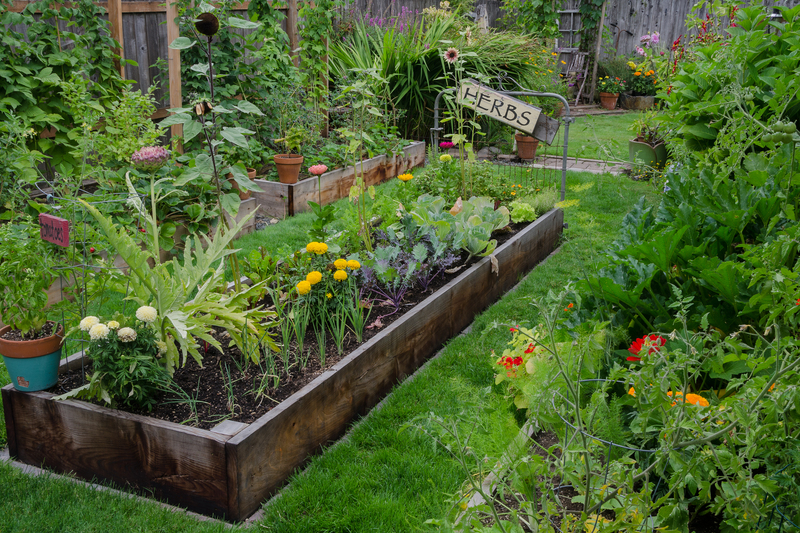Easy Home Method for Sharp Shears
Posted on 08/09/2025
Easy Home Method for Sharp Shears
Shears are an indispensable tool in many households, especially for gardening and various DIY projects. Having sharp shears is essential for achieving clean cuts and maintaining efficiency in your work. Dull shears can cause damage to plants, increase the workload, and lead to frustration. Fortunately, with a few simple methods, you can keep your shears in optimal condition right at home. This article will guide you through the easy home method for ensuring your shears are always sharp.
The Importance of Sharp Shears
Sharp shears play a crucial role in the health of your plants and the efficiency of your cutting tasks. When shears are dull, they tend to crush or tear rather than make clean cuts. This can lead to plant damage, increasing the risk of infection and disease. Furthermore, using dull shears requires more effort, which can be physically taxing and time-consuming.

Gathering the Necessary Tools
Before you begin sharpening your shears, it's essential to gather all the necessary tools. The basic supplies include:
- Sharpening Stone: A medium-grit sharpening stone is ideal for this task. You can find these at most hardware stores.
- Water or Oil: Depending on the type of sharpening stone you use, you may need water or oil to lubricate the stone.
- Clean Cloth: A soft, clean cloth is useful for wiping down the shears and the stone.
- Protective Gloves: Wearing gloves can protect your hands during the sharpening process.
Preparing Your Shears
Before you start sharpening, it's important to prepare your shears properly:
- Clean the Shears: Remove any dirt, sap, or debris from the blades using a damp cloth. This ensures a smooth sharpening process.
- Disassemble if Possible: If your shears can be taken apart, disassemble them. This makes it easier to sharpen each blade evenly.
- Inspect for Damage: Check the blades for any nicks or significant dents. If the damage is severe, you may need to have the blades professionally repaired or replaced.
Sharpening the Blades
Once your shears are clean and prepped, you can begin the sharpening process:
- Lubricate the Stone: Apply a small amount of water or oil to the sharpening stone based on the manufacturer's instructions.
- Angle and Pressure: Hold the blade at the correct sharpening angle against the stone, usually around 20 to 30 degrees. Apply even pressure as you move the blade across the stone in a sweeping motion.
- Repeat Evenly: Sharpen the entire length of the blade, ensuring each pass is consistent. Typically, 5-10 strokes on each side of the blade suffice.
- Check Sharpness: Wipe the blade with a clean cloth and test its sharpness by cutting through a piece of paper or a plant stem. If necessary, repeat the sharpening process.
- Reassemble and Oil: Once both blades are sharpened, reassemble the shears and apply a few drops of oil to the pivot point to ensure smooth operation.
Maintaining Sharp Shears
To prolong the life of your sharp shears, maintenance is key:
- Regular Cleaning: After each use, clean your shears to remove any sap or residue.Proper Storage: Store your shears in a dry place to prevent rusting and damage.
- Frequent Sharpening: Depending on usage, sharpen your shears every few months to keep them in top condition.
- Lubrication: Periodically oil the pivot point and blades to ensure smooth operation and prevent rust.

Troubleshooting Common Problems
Even with regular maintenance, you may encounter some issues with your shears. Here are a few common problems and their solutions:
- Dull Blades: If your shears are not cutting efficiently despite sharpening, the angle might be incorrect, or the blades may need more strokes on the sharpening stone.
- Rust: Remove rust by scrubbing the blades with a mixture of baking soda and water or using a rust remover. Ensure you dry and oil the blades afterward to prevent future rusting.
- Stiff Movement: If the shears are difficult to open and close, apply oil to the pivot point and check for any debris. If necessary, disassemble the shears and clean the pivot area thoroughly.
- Nicks and Dents: Small nicks can be filed down with a sharpening stone, but extensive damage may require professional repair.
Conclusion
Keeping your shears sharp is a straightforward process that can significantly enhance your gardening and DIY tasks. By following these easy home methods, you can ensure your shears remain in excellent condition, providing clean cuts and making your work more efficient. Remember to clean, sharpen, and maintain your shears regularly to extend their lifespan and improve their performance.



